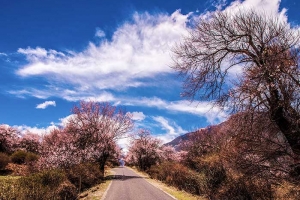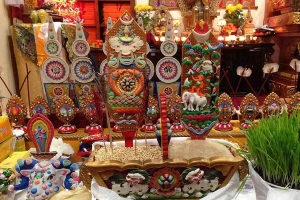Tibet’s breathtaking landscapes are home to a diverse array of wildlife and livestock that define the region’s unique culture and ecology. From elusive wild creatures roaming the high plateaus to the resilient stock animals that sustain Tibetan life, this guide introduces the fascinating fauna travelers may encounter on their journey.
Wild Wonders of the Tibetan Plateau
Tibet’s vast plateau, soaring mountains, and remote landscapes create a habitat for a range of fascinating wildlife. Whether you’re trekking through high-altitude plains or visiting sacred lakes, you’re bound to encounter some of Tibet’s most iconic creatures.
Tibetan Wild Ass (Kiang)
The Tibetan wild ass, or kiang, is the largest of all wild asses and a common sight in Tibet’s open plains. With a distinctive reddish-brown coat and a white belly, they roam in herds across the high-altitude grasslands, especially in northern and western Tibet. These animals are fast runners and are known to be quite curious, often stopping to observe travelers from a distance.
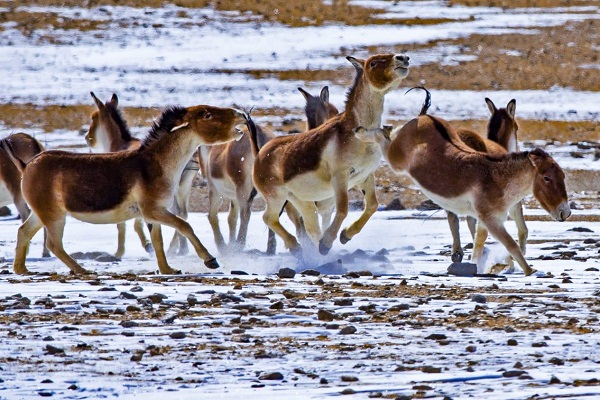
Black-Necked Crane
A symbol of longevity and spiritual purity in Tibetan culture, the black-necked crane is a sacred bird found in the wetlands of Tibet. It is one of the few crane species adapted to high-altitude environments. Travelers visiting Namtso Lake, Yamdrok Lake, or the Ngari region in the summer months may have a good chance of spotting these elegant birds as they forage in shallow waters.
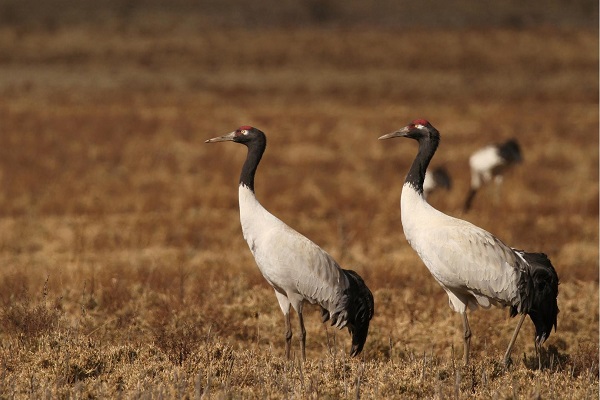
Himalayan Marmot
Himalayan marmots are one of the most frequently seen wild animals in Tibet. These large rodents inhabit the grasslands and slopes of the plateau, often found near Everest Base Camp and other trekking routes. Their burrows dot the landscape, and their distinctive whistles alert fellow marmots to potential danger. Tourists might see them standing on their hind legs, curiously observing their surroundings before darting back into their burrows.
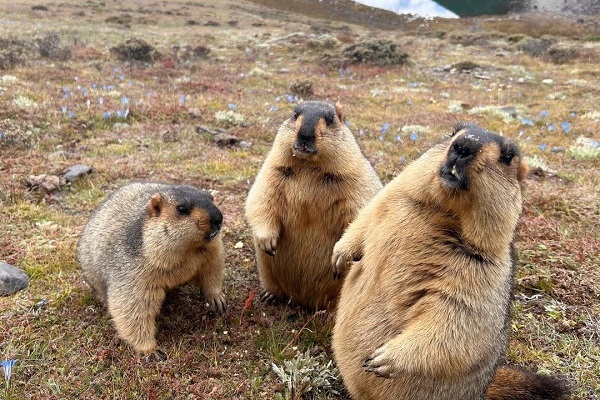
Tibetan Fox
With its square-shaped face and thick fur, the Tibetan fox is a unique and often overlooked predator of the plateau. It primarily feeds on pikas and rodents, making it an important part of Tibet’s ecosystem. These foxes are elusive, but patient travelers might spot them in the grasslands, particularly in remote regions.
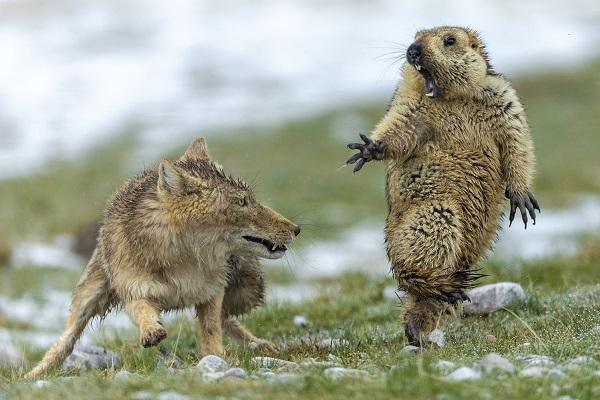
Tibetan Antelope (Chiru)
Famous for its fine underfur known as shahtoosh, the Tibetan antelope, or chiru, is a high-altitude species that primarily inhabits the Changtang region. Though they were once heavily hunted, conservation efforts have helped stabilize their population. While common in northern Tibet, they are harder to see in tourist areas. However, if you’re traveling deep into the plateau, you may spot a herd grazing in the distance.
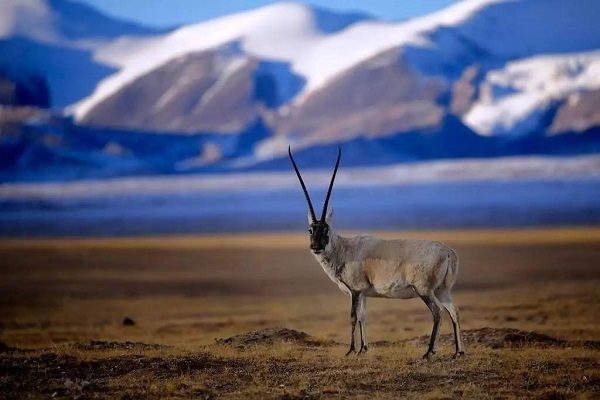
Guardians of Tibetan Life: Livestock of the Plateau
Tibet’s livestock is essential to its culture and daily life. These animals provide transportation, food, and materials for traditional Tibetan crafts and clothing.
Yaks: The Backbone of Tibetan Life
One of the most iconic animals in Tibet, the yak is essential to Tibetan culture and survival. These hardy, long-haired bovines are used for transportation, dairy products, wool, and even fuel (in the form of dried dung). Domesticated yaks are seen everywhere in Tibet, from remote villages to major highways. Their presence is so strong that visitors often find yak butter tea and yak meat on restaurant menus.

Tibetan Sheep
Tibetan sheep are another important livestock species, providing wool for traditional Tibetan clothing and blankets. These sheep are well-adapted to the harsh climate and graze in large herds across the plateau. Their wool is used to make carpets, tents, and warm clothing that help Tibetans survive the cold.
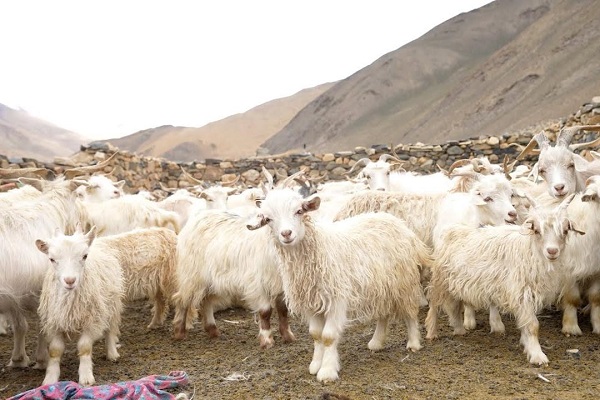
Tibetan Goat
Tibetan goats are known for their thick fur and are raised primarily for cashmere production. They are smaller than yaks and sheep but are highly resilient to the cold. Many Tibetan nomads rely on these goats for their livelihoods, selling cashmere wool to traders.
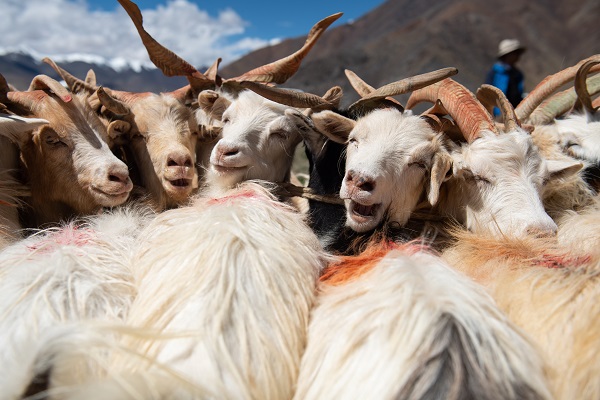
Horses of Tibet
Tibetan horses are small yet incredibly strong, bred to navigate the rugged terrain of the plateau. They have been used for centuries in transportation, trade, and even warfare. Though less common today due to modern vehicles, they can still be seen in nomadic regions and used in traditional horse-riding festivals.
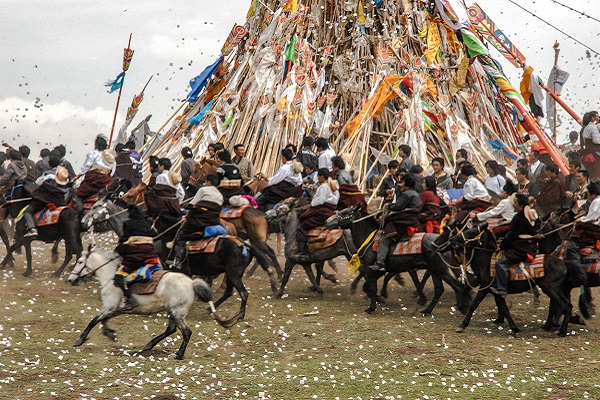
Best Places and Times to Encounter Tibet’s Animals
For tourists interested in seeing these animals up close, several locations offer excellent wildlife viewing opportunities. The best time to visit depends on the species and the season.
Where to Spot Tibet’s Wildlife and Livestock
- Namtso Lake and Yamdrok Lake – Great spots for seeing black-necked cranes, yaks, and herds of sheep.
- Changtang Nature Reserve – One of the best places to spot wild kiangs, chirus, and Tibetan foxes.
- Everest Base Camp Trek – Common for spotting Himalayan marmots, yaks, and Tibetan horses.
- Nomadic Pastures in Amdo and Kham – Ideal for observing traditional Tibetan livestock like yaks and goats.
When to Visit for the Best Experience
- Spring and Summer (April–August) – Best time for seeing migratory birds like black-necked cranes and for observing livestock in lush pastures.
- Autumn (September–November) – Good for trekking and seeing wildlife as animals prepare for winter.
- Winter (December–March) – Harsh conditions, but some animals like yaks and Tibetan foxes can still be seen.
Tibet’s animal life is as breathtaking as its landscapes. Whether you are an adventurer, a nature enthusiast, or simply a curious traveler, encountering these unique creatures is an unforgettable part of the journey.



